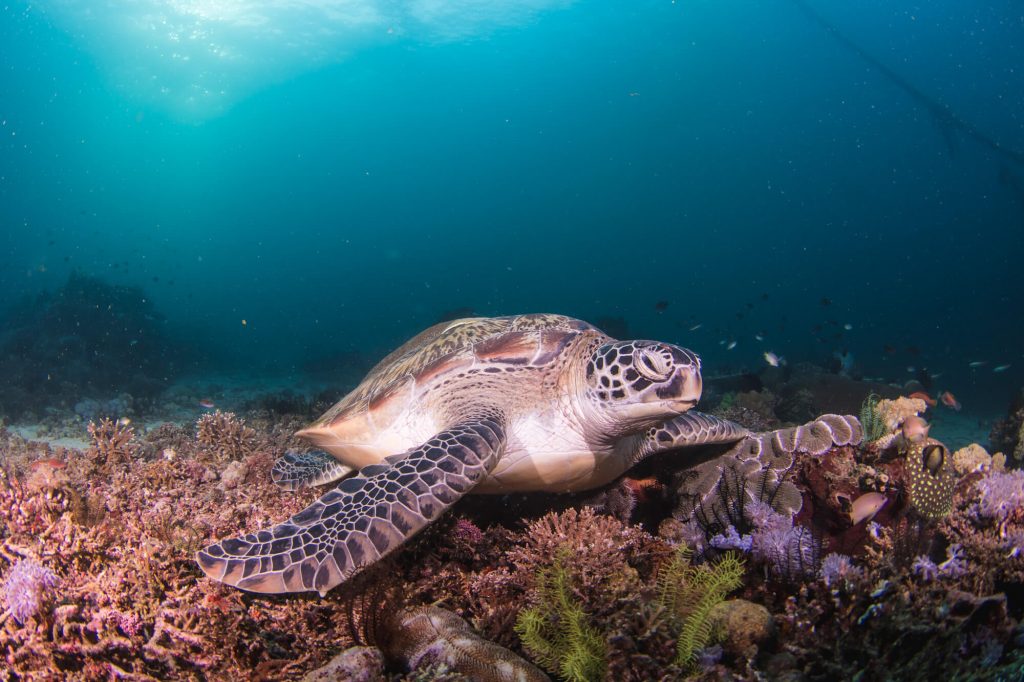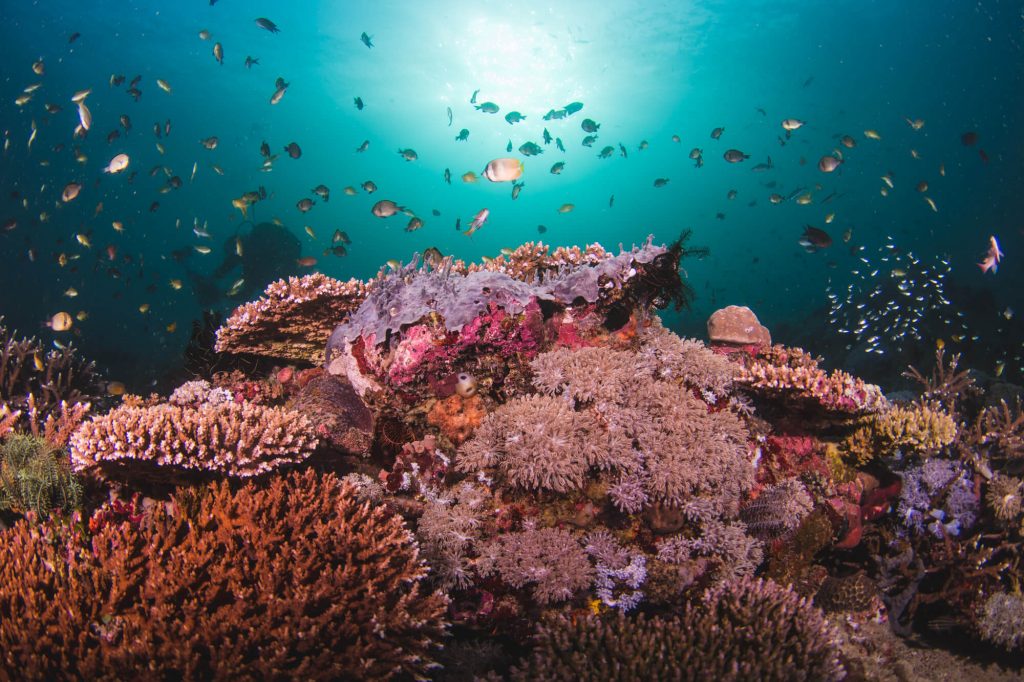Top Dive Spots in the Philippines that Every Underwater Photographer Has to Visit ASAP
(Well, as soon as we can… given the current COVID crisis. Plan your underwater photo trips NOW!)

1. Tubbataha – Big Animals and Abundant Marine Life
Tubbataha Natural Park is an underwater photographer’s dream with abundant marine life, healthy corals, and big animals like whale sharks, dolphins, sharks, and turtles. This protected UNESCO World Heritage Site is an atoll reef in the center of the Sulu Sea and only accessible to liveaboard dive boats during a few months a year. It is definitely a bucket list destination.
Protecting this site and limiting boats and visitors is helping to keep the reef pristine and allow it to flourish even more. Park rangers monitor the area year round to help protect it from fishermen, marine life collection, pollution, and other disturbances. Usually divers spend a week diving up to five times a day capturing this beautiful World Heritage Site.

2. Malapascua – Thresher Sharks!
Thresher sharks are a unique deep water shark species rarely seen by recreational scuba divers, however, every morning the threshers come up to be cleaned around the island of Malapascua. After getting up before dawn, divers line up along a naturally formed ledge and watch these amazing sharks with their big eyes and huge thresher-like tail that can be as tall as the length of their bodies! Sensitive to light, no strobes or video lights are allowed, but the sharks often get close enough to divers for natural light photos.
Thresher sharks aren’t the only thing you can photograph in Malapascua. There are lots of macro critters like nudibranchs, blue ring octopus, and seahorses and even a few wreck dives. For those with technical training there are several deeper WWII wrecks as well as deep wall dives with more opportunities for thresher sharks.

3. Dumaguete and Apo Island – Macro Haven
For those looking for the best muck diving and macro critters, Dumaguete has all the critters. Black sand muck dives, often accessible from shore or very short boat rides, have lots of marine life and there are even artificial reef set up that attract lots of marine life. Divers with a good eye for the little stuff (or a good dive guide) can find frogfish of different colors and sizes; cephalopods like cuttlefish, mimic octopus and wonderpus; seahorses from the teeny-tiny pygmies to larger species up to five or six inches tall, and much more. Night dives are also excellent for critter photography.
If you decide you need a break from squinting at the small stuff, just a short boat ride away is Apo Island which has healthy fields of hard corals and beautiful marine life. Bigger fish and animals like turtles and sea snakes are common, but if you’re still interested in the tiny stuff, the reefs there are also full of macro opportunities like nudibranchs, flatworms, and even the possibility of blue ring octopus.

4. Coron, Palawan – For the Wreck Divers
What’s better than diving and photographing a ton of WWII wrecks? Diving and photographing WWII wrecks covered in the epic marine life of the Coral Triangle. Coron was the site of a WWII mission which led to around ten ships being sunk in the same area (and in recreational dive depths), including the Akitsushima and Okikawa Maru.
Divers can visit these historical ships and take images while swimming through the ships, or spend time photographing the lovely corals growing on the ship and the colorful marine life that now call the wrecks home.
It’s not all wrecks and there is also reef diving with photographic opportunities for macro life, fish, and even limestone caverns and tunnels. Barracuda Lake is a special dive site that is a volcanic crater with both fresh and saltwater you can dive (also barracudas!) Topside Palawan is also stunningly beautiful. It’s worth taking some “dry” images too.

5. Oslob – Guaranteed Whale Sharks
Years ago fishermen would keep the whale sharks from consuming all their fish by sharing some of their catch with these giant animals. This relationship was discovered by divers and at Oslob you can get very close to whale sharks either scuba diving or snorkeling. Currently the dive site is set up off a beach and participants first go through a mini-learning session on how to safely swim with the whale sharks (for their protection). Then visitors can dive or snorkel (cameras welcome) while former fishermen toss in snacks for the whale sharks. While the experience may seem a bit zoo-like to some participants, it does provide an excellent opportunity to get close and photograph these amazing giants. It’s fun to get traditional outrigger boats in the images too.

6. Moalboal – Lots and Lots of Sardines
Need I say more? Usually very close to shore is a huge bait ball of sardines with an estimation of over seven million fish just waiting for you to dive and photograph it! There is something completely amazing about a school of fish so large that it can block out the light if you are underneath it. As you swim into the tornado of fish, the fish will part way and move around you. Whenever you exhale, the fish move to allow the bubbles to pass and then close in the space again after.
This is a great spot to work with an underwater model on scuba or a free diver. Adding a person to show scale is a great way to show how large the bait ball is and the way they move around divers.
Conclusion
While these are some of the top dive sites in the Philippines, anytime I’m there, I always feel like I could jump in anywhere in the whole country and find amazing things to photograph underwater. The Philippines is definitely an underwater photographer’s dream destination. Get your underwater photo gear ready and start planning your trip now!
- The Ultimate Guide to Underwater Macro Photography – March 27, 2023
- The Ultimate Lens Guide for Mirrorless Cameras Underwater – February 1, 2023
- The Ultimate Underwater Housing Maintenance Guide – June 16, 2022

 CAD
CAD




